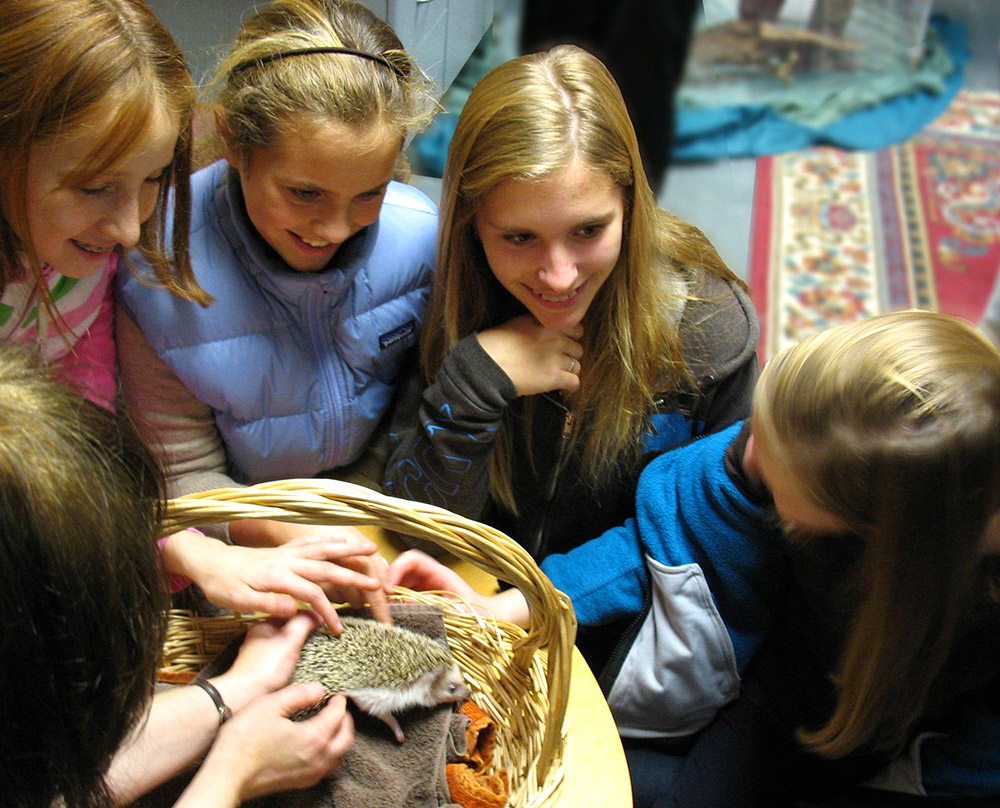 Every Nature Connection program delivered is a holistic session combining personal interaction with natural materials (plants, flowers, sand, snow, etc.) and animals along with storytelling, crafts, and music or sounds of nature. Though truth be told—as any participant will tell you—the real stars of the program are the animals.
Every Nature Connection program delivered is a holistic session combining personal interaction with natural materials (plants, flowers, sand, snow, etc.) and animals along with storytelling, crafts, and music or sounds of nature. Though truth be told—as any participant will tell you—the real stars of the program are the animals.
We’re fortunate to have an incredible assortment of wonderful animals “on staff” and are so grateful to the families that host these animals and allow them to provide such a valuable service in our therapeutic programs throughout the year. In addition, we also have a number of “visiting professors” like (catch-and-release) frogs, tadpoles, and butterflies that join us for special sessions. Our line-up varies a bit over time, but over the years has included:
- Cats
- Chickens
- Chinchillas
- Crows
- Dogs
- Doves
- Ducks
- Garden Snails
- Geckos
- Guinea Pigs
- Hedgehogs
- Hermit Crabs
- Owls
- Rabbits
- Turtles
Current “Staff”
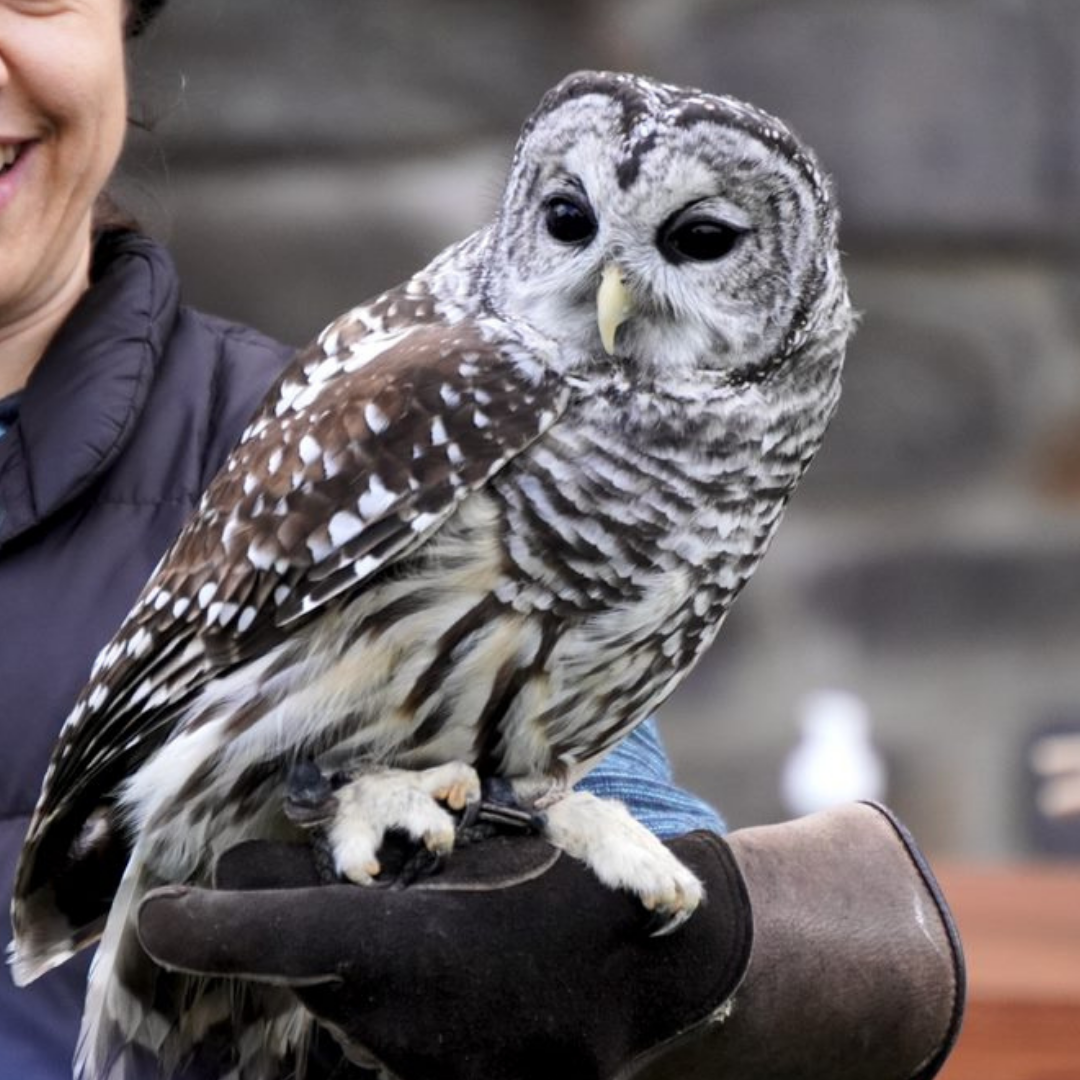
Mr. Owl
Owl
Mr. Owl, a Barred Owl born in wild New England, now lives with Nature Connection off-site under state and federal education permits after an injury left him deaf and blind on his right side. His presence brings the serenity and wonder of the wild woods to our program participants and teaches us all respect for nature’s miracles.
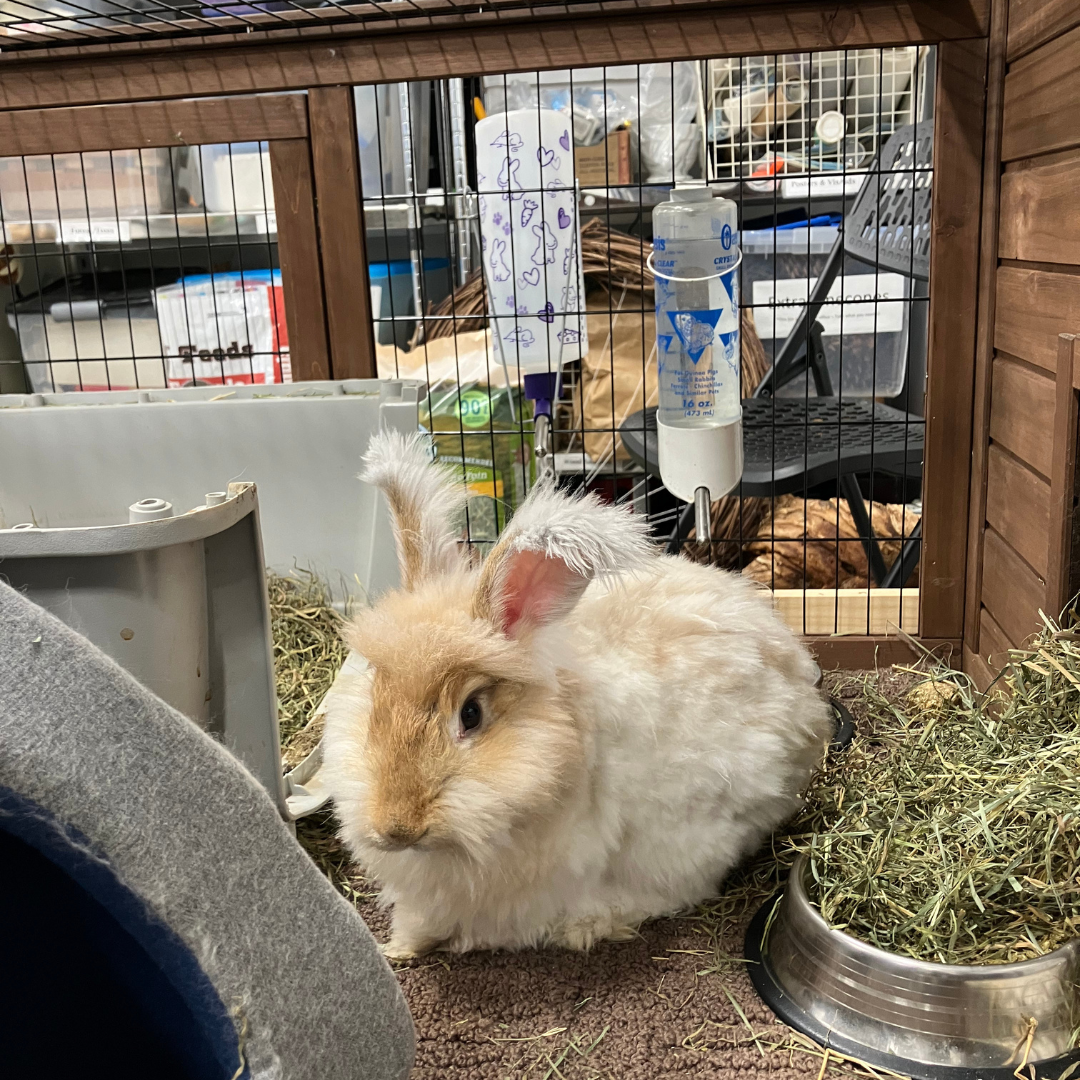
Peaches
Angora Rabbit
Peaches is one of our newest program animals. She arrived with her sister, Cocoa, in January 2024. Peaches is the leader of the two rabbits, bravely going up to strangers and always checking out what's happening at The Nature Connection or on programs. Although Peaches and Cocoa are under one year old, they both weigh over 5 pounds!
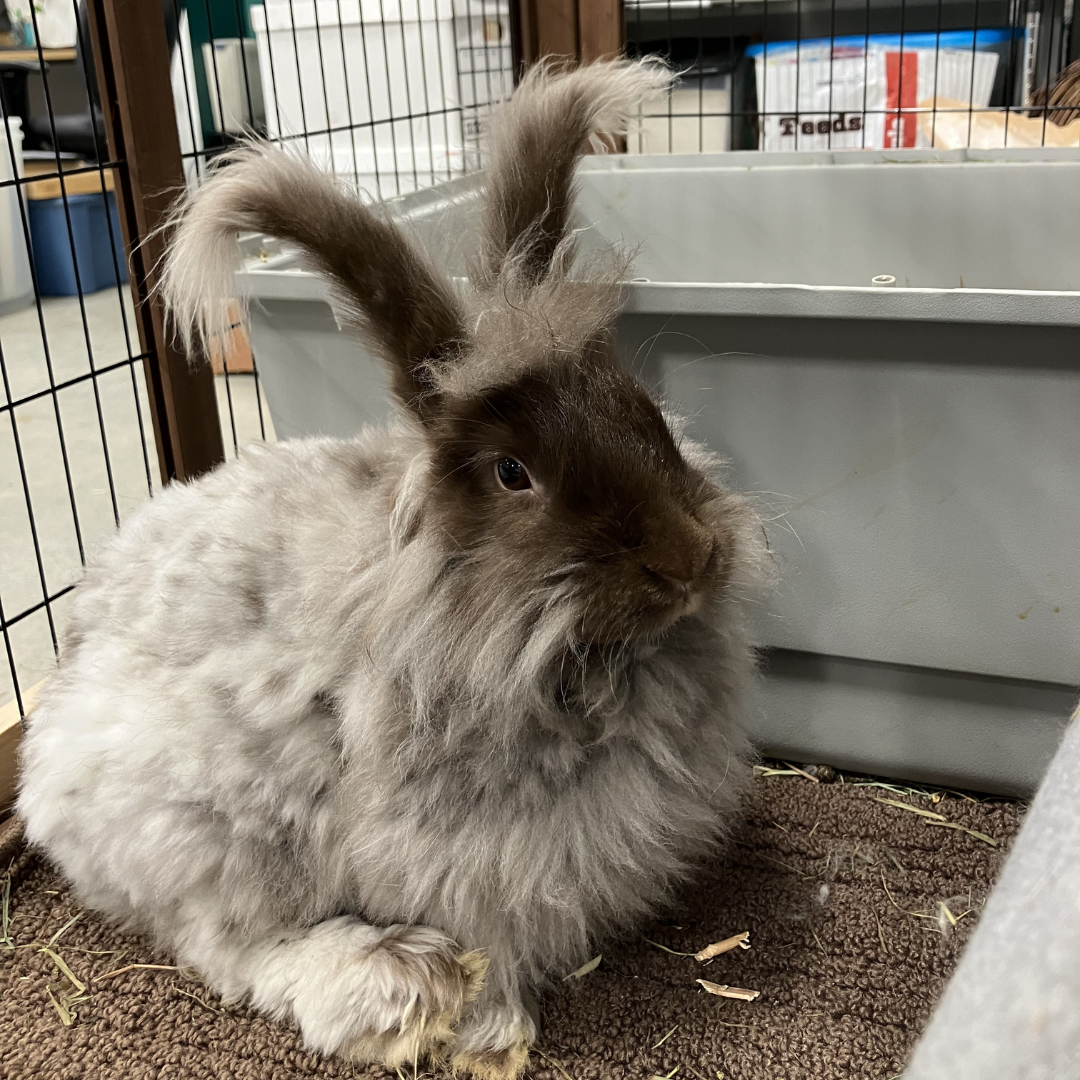
Cocoa
Angora Rabbit
Cocoa is Peaches' sister. They are both large, fluffy bunnies, but have very different personalities! Cocoa is much more aloof than Peaches. A little bit of a diva, Cocoa likes to watch her surroundings carefully and doesn't always want to be touched. With a little patience, Cocoa opens up and can be just as sweet as her sister. She enjoys chasing Peaches around their cage and eating lettuce, pineapple, hay, and other vegetables. As Angora Rabbits, Peaches and Cocoa need to be groomed regularly. Their fur is often spun into wool and is considered a luxury fiber. We can't wait to bring Peaches and Cocoa's fur around on programs with us!
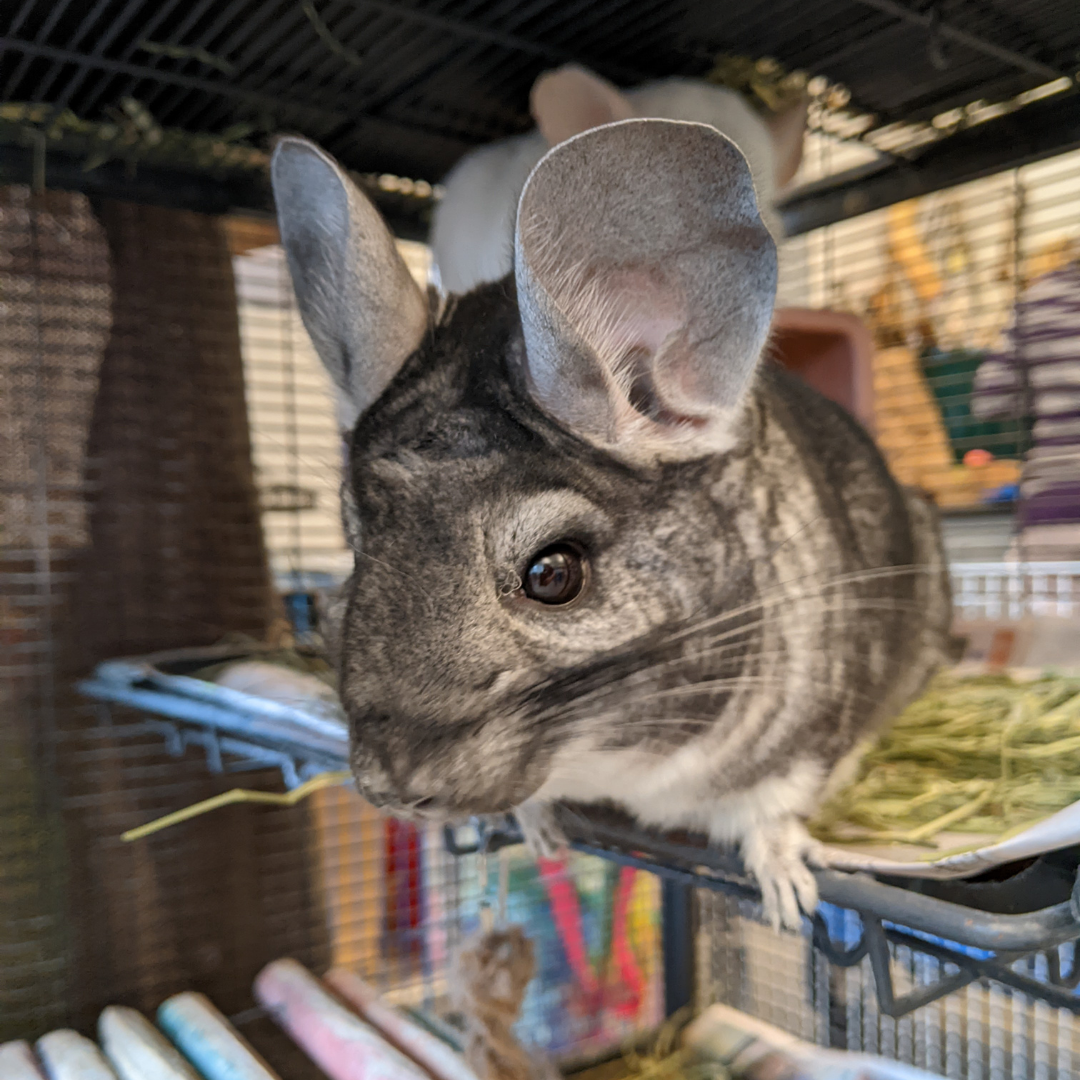
Soy Sauce
Chinchilla
Soy Sauce is one of two chinchillas living in our office. When he’s not chewing on baskets or treats, he can be found taking naps under his wooden cubby or resting with his companion, Sushi. Chinchillas in the wild are native to the Andes in South America and actually prefer colder temperatures - Soy Sauce has been known to hop over his pen and turn down our office thermostat!
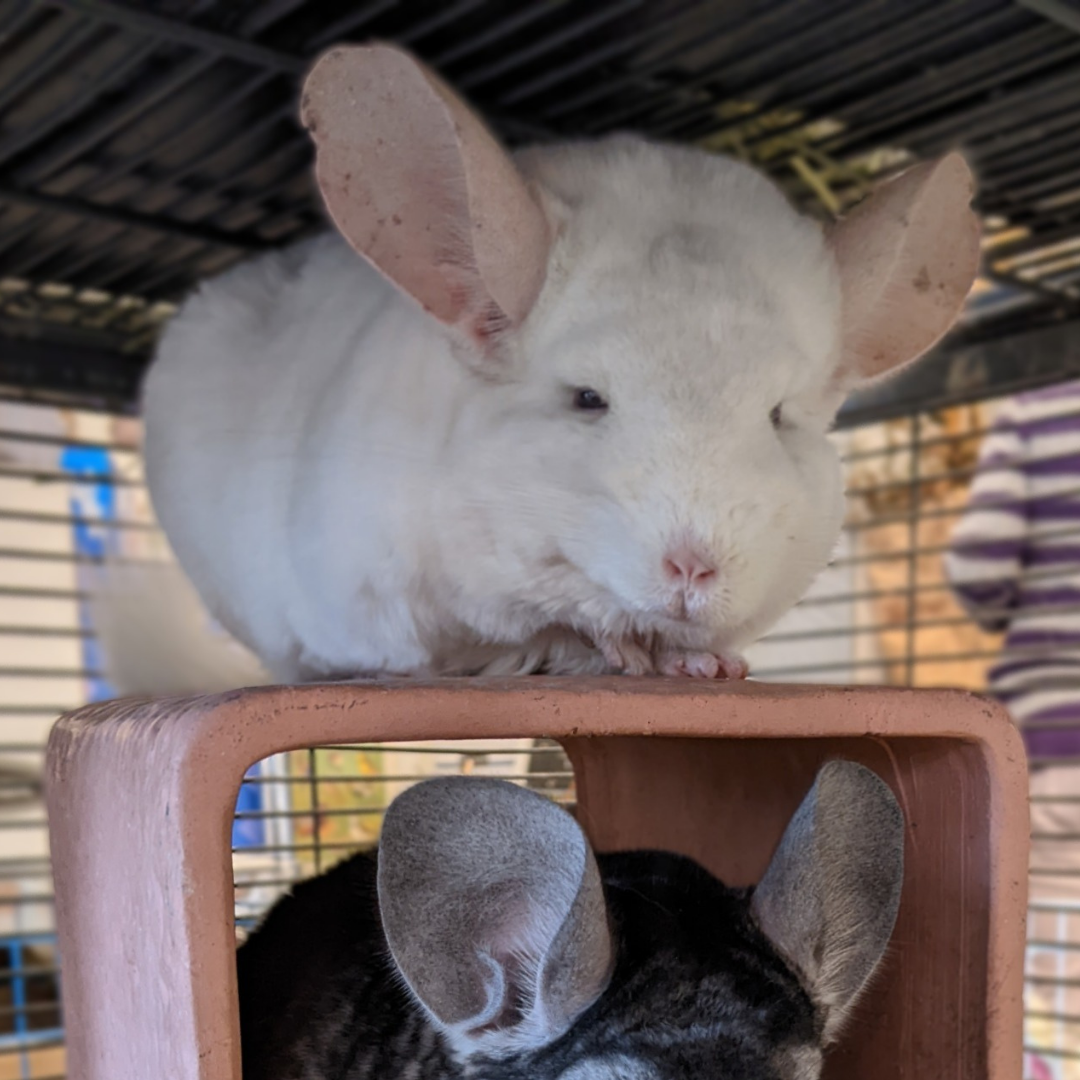
Sushi
Chinchilla
Sushi lives with our other chinchilla, Soy Sauce, in an enclosure in the center of the office. Sushi is known for his uncanny napping abilities. He also loves sand baths, dried flowers, and his pal Soy Sauce. Witnessing a chinchilla bathing in sand or catching one making their unusual sound is a truly gratifying experience. We’re grateful for their cheerful presence in our office.
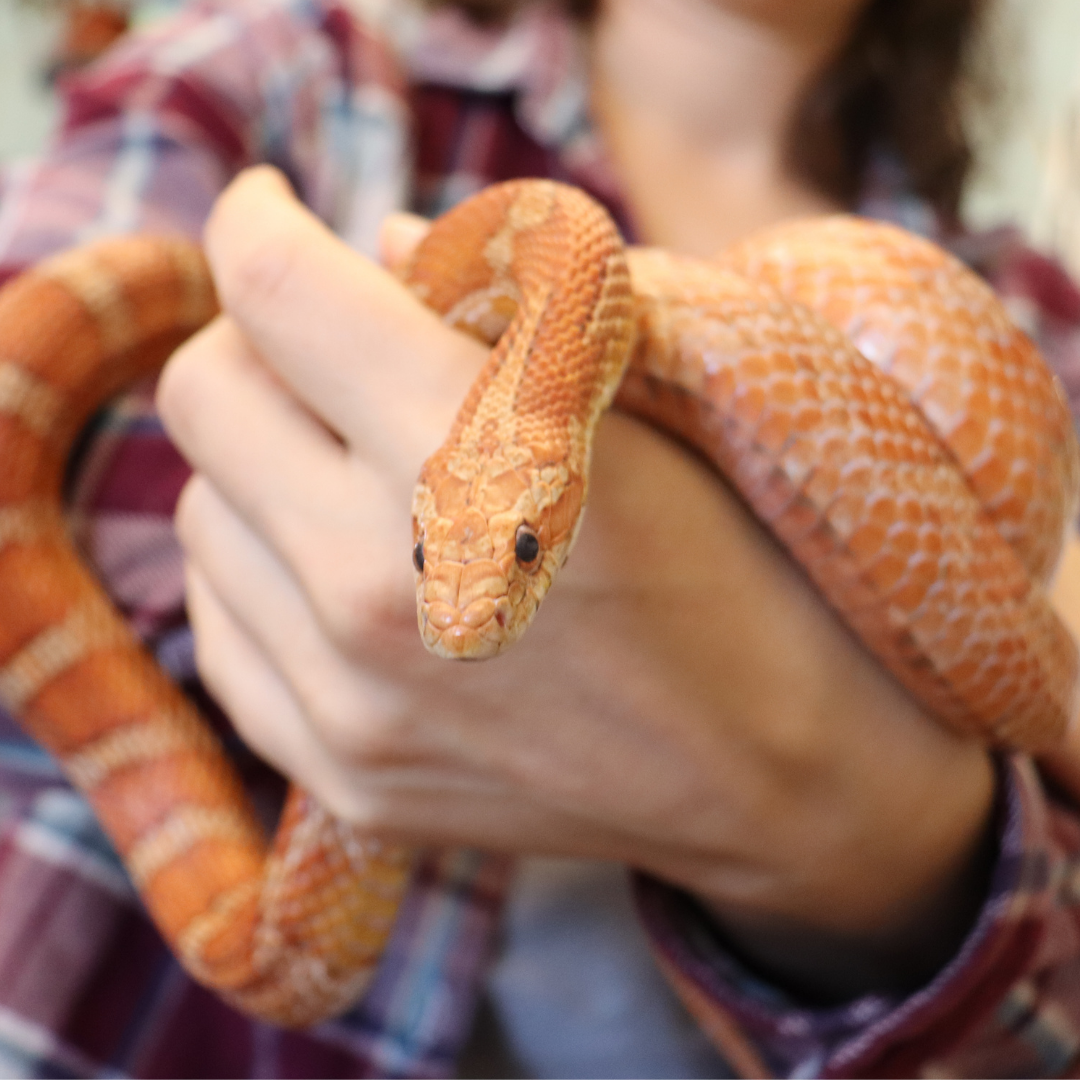
Albus
Cornsnake
Albus, a corn snake with stripes and orangey-brown coloring, lives in a tank at the front of our office. He mainly enjoys relaxing, though every once and a while when there's a lot of activity he'll poke his head up and watch what's going on around him. In the wild, corn snakes inhabit wooded groves, rocky hillsides, meadowlands, woodlots, rocky open areas, tropical hammocks, barns and abandoned buildings. Interestingly, they are very secretive creatures, spending a lot of time underground. While Albus doesn’t go underground, he spends the majority of his time hiding away in the wooden, cave-like structure in his tank.

Sammy
Snail
Our snail, Sammy, lives with several snail friends in a tank in our office. In the wild, snails eat a variety of different foods. Terrestrial snails are usually herbivorous, however there are some species that are predatory carnivores or omnivores. The diet of most land snails can include leaves, soft bark, fruit, vegetables, and algae. While some species may damage plants, they are also kept as pets. As Nature Connection program participants will tell you: if you are very, very quiet, you can hear a snail munching on a leaf of lettuce.

